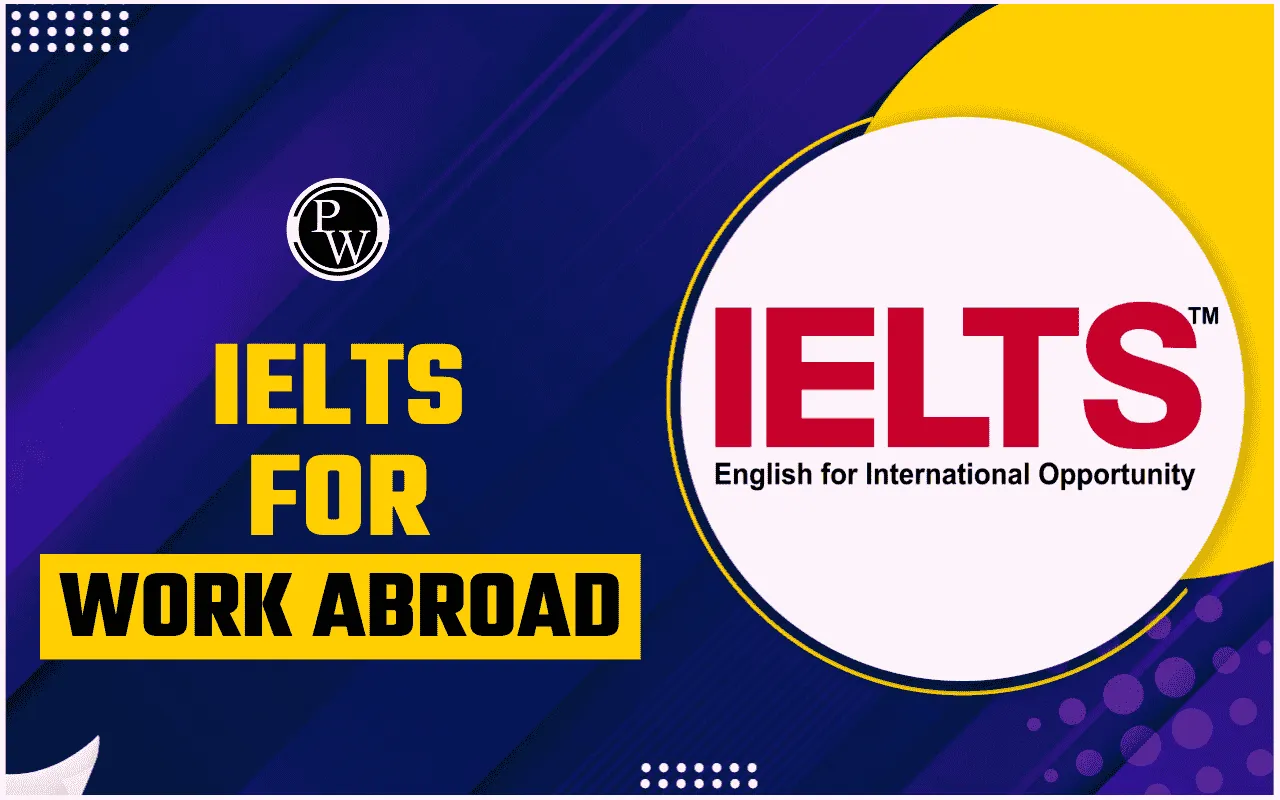

How to solve Multiple Choice Question Types in IELTS Reading?
What are IELTS Reading Multiple Choice Questions? The multiple-choice questions are an important part of the IELTS Reading test. It assesses your comprehension skills for the given passage. There are generally two types of Multiple Choice Questions in IELTS: Single Answer MVQs and Multiple Answer MCQs (where students can choose more than one correct option). The ideal structure of the IELTS MCQ includes a prompt question with typically 3 or 4 options (A, B, C, D).
Skills Assessed in IELTS Multiple Choice Questions
The IELTS Reading MCQs assess four main English language skills of students, including:
-
Scanning for Information
-
Understanding Details
-
Recognising Main Ideas
-
Making Inferences
Should You Use All Capital Letters in the IELTS Listening and Reading Tests
Strategies for Solving IELTS Reading Multiple Choice Questions
Here are key strategies to help you solve IELTS Reading Multiple Choice Questions effectively:
-
Read the Questions Before the Passage: Read the questions first to know what you are looking for. This helps you focus on important information.
-
Identify and Underline Keywords: Highlight important words in the questions. Keywords help you find the right part of the passage quickly.
-
Scan the Passage Efficiently: Look through the passage quickly to find keywords or ideas. Scanning saves time and helps you find answers faster.
-
Read Around the Keywords: Once you find a keyword, read the sentences around it. This gives you more context and helps you understand the meaning.
-
Eliminate Incorrect Options: Cross out answers that are clearly wrong. This makes it easier to find the right answer.
-
Watch Out for Distractors: Be careful of answers that sound good but are not correct. Distractors are meant to confuse you.
-
Do Not Rely on Memory: Don’t try to remember everything. Always check the passage to find the correct answer.
-
Manage Your Time Wisely: Keep track of time and don’t spend too long on one question. Use your time wisely to answer all questions.
How to Manage Time in IELTS Reading
Common Mistakes to Avoid
Here are some common mistakes candidates should avoid to improve their IELTS Reading band score 2025:
-
Misinterpreting the Question
-
Choosing a Familiar Word
-
Skipping Instructions
The Future Of Work IELTS Reading Answers Passage
Questions 1-13, based on the reading passage below, should take you about 20 minutes to complete.
The Future Of Work
-
According to a leading business consultancy, 3-14% of the global workforce will need to switch to a different occupation within the next 10-15 years, and all workers will need to adapt as their occupations evolve alongside increasingly capable machines. Automation – or ‘embodied artificial intelligence’ (AI) – is one aspect of the disruptive effects of technology on the labour market. ‘Disembodied AI’, like the algorithms running in our smartphones, is another.
-
Dr Stella Pachidi from Cambridge Judge Business School believes that some of the most fundamental changes are happening as a result of the ‘algorithmication’ of jobs that are dependent on data rather than on production – the so-called knowledge economy. Algorithms are capable of learning from data to undertake tasks that previously needed human judgement, such as reading legal contracts, analysing medical scans and gathering market intelligence. ‘In many cases, they can outperform humans,’ says Pachidi. ‘Organisations are attracted to using algorithms because they want to make choices based on what they consider is “perfect information”, as well as to reduce costs and enhance productivity.’‘But these enhancements are not without consequences,’ says Pachidi. ‘If routine cognitive tasks are taken over by AI, how do professions develop their future experts?’ she asks. ‘One way of learning about a job is “legitimate peripheral participation” – a novice stands next to experts and learns by observation. If this isn’t happening, then you need to find new ways to learn.’
-
Another issue is the extent to which the technology influences or even controls the workforce. For over two years, Pachidi monitored a telecommunications company. ‘The way telecoms salespeople work is through personal and frequent contact with clients, using the benefit of experience to assess a situation and reach a decision. However, the company had started using a[n] … algorithm that defined when account managers should contact certain customers about which kinds of campaigns and what to offer them.’
-
The algorithm – usually build by external designers – often becomes the keeper of knowledge, she explains. In cases like this, Pachidi believes, a short-sighted view begins to creep into working practices whereby workers learn through the ‘algorithm’s eyes’ and become dependent on its instructions. Alternative explorations – where experimentation and human instinct lead to progress and new ideas – are effectively discouraged. Pachidi and colleagues even observed people developing strategies to make the algorithm work to their own advantage. ‘We are seeing cases where workers feed the algorithm with false data to reach their targets,’ she reports.
-
It’s scenarios like these that many researchers are working to avoid. Their objective is to make AI technologies more trustworthy and transparent, so that organisations and individuals understand how AI decisions are made. In the meantime, says Pachidi, ‘We need to make sure we fully understand the dilemmas that this new world raises regarding expertise, occupational boundaries and control.’
-
Economist Professor Hamish Low believes that the future of work will involve major transitions across the whole life course for everyone: ‘The traditional trajectory of full-time education followed by full-time work followed by a pensioned retirement is a thing of the past,’ says Low. Instead, he envisages a multistage employment life: one where retraining happens across the life course, and where multiple jobs and no job happen by choice at different stages.
-
On the subject of job losses, Low believes the predictions are founded on a fallacy: ‘It assumes that the number of jobs is fixed. If in 30 years, half of 100 jobs are being carried out by robots, that doesn’t mean we are left with just 50 jobs for humans. The number of jobs will increase: we would expect there to be 150 jobs.’ Dr Ewan McGaughey, at Cambridge’s Centre for Business Research and King’s College London, agrees that ‘apocalyptic’ views about the future of work are misguided. ‘It’s the laws that restrict the supply of capital to the job market, not the advent of new technologies that causes unemployment.’His recently published research answers the question of whether automation, AI and robotics will mean a ‘jobless future’ by looking at the causes of unemployment. ‘History is clear that change can mean redundancies. But social policies can tackle this through retraining and redeployment.’
-
He adds: ‘If there is going to be change to jobs as a result of AI and robotics then I’d like to see governments seizing the opportunity to improve policy to enforce good job security. We can “reprogramme” the law to prepare for a fairer future of work and leisure.’ McGaughey’s findings are a call to arms to leaders of organisations, governments and banks to pre-empt the coming changes with bold new policies that guarantee full employment, fair incomes and a thriving economic democracy. ‘The promises of these new technologies are astounding. They deliver humankind the capacity to live in a way that nobody could have once imagined,’ he adds. ‘Just as the industrial revolution brought people past subsistence agriculture, and the corporate revolution enabled mass production, a third revolution has been pronounced. But it will not only be one of technology. The next revolution will be social.’
Multiple Choice Questions Sample
1. What percentage of the global workforce may need to switch occupations in the next 10-15 years?
A) 1-5%
B) 3-14%
C) 10-25%
D) 5-20%
2. What does the term "embodied AI" refer to?
A) AI used only in smartphones
B) Human-like robots
C) Automation technologies
D) Disembodied algorithms
3. What concern does Dr Stella Pachidi raise regarding AI in the workplace?
A) AI will take over all physical jobs
B) Workers will not adapt to automation
C) There may be no way to train future experts
D) AI is always unreliable
4. What is meant by “legitimate peripheral participation”?
A) AI supervising human workers
B) Employees learning by reading manuals
C) Novices learning by observing experienced workers
D) Workers participating in software development
5. Why did a telecom company start using an algorithm according to the passage?
A) To fire non-performing workers
B) To replace managers
C) To guide account managers on customer interactions
D) To reduce internet usage
6. What behavior did some employees adopt in response to algorithmic control?
A) They quit their jobs
B) They followed instructions exactly
C) They fed it false data to meet targets
D) They improved its code
7. What is one main goal of researchers studying AI in the workplace?
A) Replacing all jobs
B) Developing personal robots
C) Making AI decisions transparent and trustworthy
D) Eliminating human error completely
8. What does Professor Hamish Low suggest about career patterns?
A) They will remain unchanged
B) Full-time jobs will disappear completely
C) People will follow a multistage employment life
D) Everyone will retire early
9. What false assumption do some job loss predictions rely on, according to Low?
A) Machines will always outperform humans
B) Job numbers will decrease
C) Capital is unlimited
D) People won’t retrain
10. According to Dr Ewan McGaughey, what is key to managing change in the job market?
A) Letting the economy adjust itself
B) Accepting mass unemployment
C) Implementing strong social policies
D) Avoiding new technologies
Multiple Choice Questions Sample Answers
Here's the table with the answers to the multiple-choice questions:
| Multiple Choice Questions Sample Answers | |
|---|---|
|
Question Number |
Correct Answer |
|
1 |
B) 3-14% |
|
2 |
C) Automation technologies |
|
3 |
C) There may be no way to train future experts |
|
4 |
C) Novices learning by observing experienced workers |
|
5 |
C) To guide account managers on customer interactions |
|
6 |
C) They fed it false data to meet targets |
|
7 |
C) Making AI decisions transparent and trustworthy |
|
8 |
C) People will follow a multistage employment life |
|
9 |
B) Job numbers will decrease |
|
10 |
C) Implementing strong social policies |
Guidance of PW IELTS
Physics Wallah offers a few popular online IELTS courses for all students. Follow the latest IELTS articles to better prepare for the exam.
| IELTS Registration | IELTS Eligibility Criteria |
| IELTS Exam Pattern | IELTS Syllabus |
| IELTS Exam Dates | IDP IELTS Test Centers |
How To Solve Multiple Choice Question Types in IELTS Reading FAQs
How to solve IELTS reading multiple choice questions?
How to answer multiple choice reading questions?
How to solve IELTS listening multiple choice questions?
How to solve MCQs in reading?
What is the trick for multiple choice questions?











